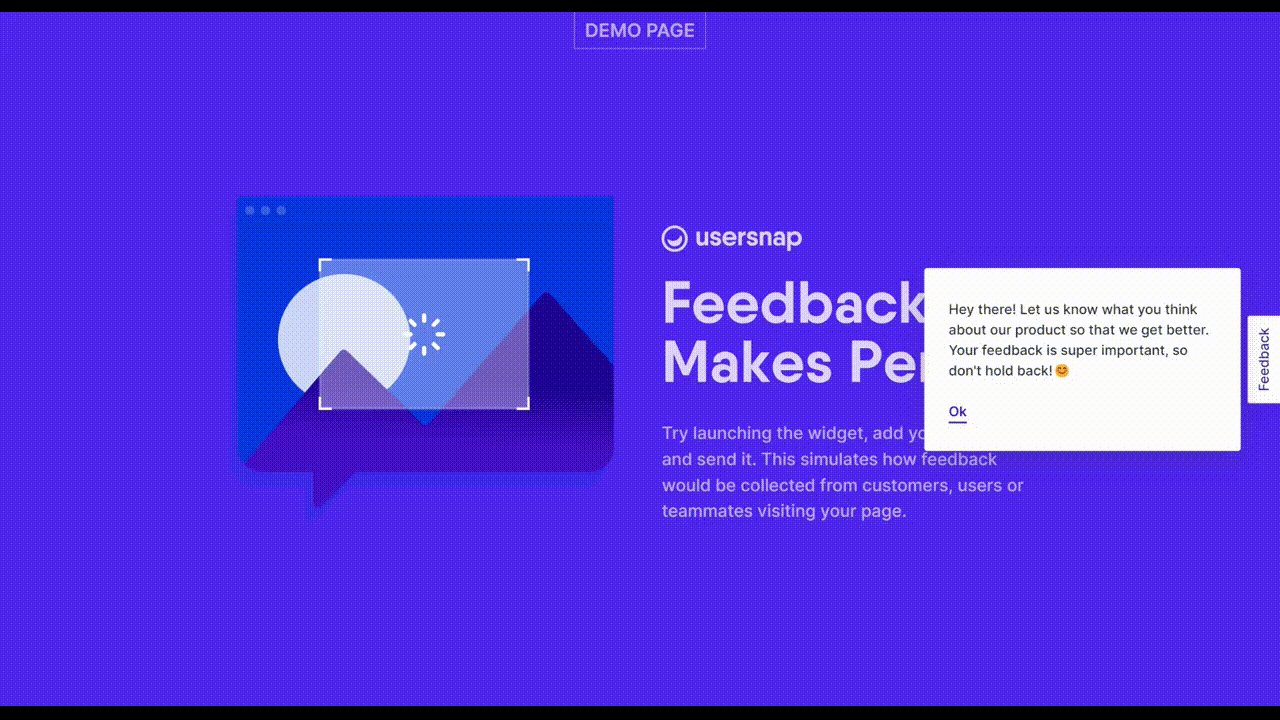Best practices for collecting feedback
A guide to receiving more valuable insights from your customers
If you feel like your feedback traffic could be better, it's time to take some action. We have collected best practices for getting more feedback to make sure you get the most out of Usersnap. Let's dive in!
Build your widget like a pro

A user-friendly widget will undoubtedly attract more feedback. Here's how to create one:
Keep the form simple:
- Avoid too many blocks by automatically passing user data with the widget. For instance, you can authenticate users who submit feedback and remove the email field from the widget.
- Add 1-2 follow-up questions if needed, but make the form as concise as possible
- Write the widget text in a more personal, engaging tone to make it less "dry" and create a connection with the users.
Customize your widget:
- Use noticeable colors associated with your brand
- Remove Usersnap branding and add your own logo
- Include an intro to make sure the users notice the button and understand its purpose.
- Add emojis or images to the widget can make it more engaging, encouraging users to click and share their thoughts.
If you use the button, make sure it’s visible and engaging:
- The button should be seen at all times: depending on your interface, make sure the button is not blocked by other options. Suggested button positions: top middle or right-center
- The naming of the button is also important. Whether you label it as "Feedback," "Support," or "Get Help," it should align with what users anticipate when they see it.
Target the widget wisely
Targeting is a crucial step for the success of your project. After going through the most important steps (setting the audience, activation method and the pages you want to show the widget on), you can add some finishing touches to ensure a lot of replies:
Start by finding out the best display frequency for your widget by testing different settings. If you want the widget to be popped several times, make sure to identify that:

We generally recommend to display a widget 2-3 times per user and, if dismissed, show in at least 3 days (for urgent feedback) or 60 days (for NPS, CSAT and other general feedback).
If you use a pop-up, determine which points in the user journey you need feedback on by identifying the event-based KPIs that are integral to your business's success. For example, you can pop the widget when:
- A customer goes to payments or checkout
- Your CS representative closes a conversation with a user
- A customer is unsubscribing from the product (exit survey)
- You need feedback on the new feature
- A customer hasn't logged in the dashboard for a while
Collect feedback proactively:
If you are new to Usersnap:Check out our article that covers all Usersnap collection types or watch our Academy section to learn more
Don't want to wait until your users click the feedback button? We've got you covered! Here are some ways to collect the feedback proactively:
- Email survey and shareable link work best if you want to collect feedback proactively. For instance, you can send out an email campaign with a link to a Usersnap survey.
- Use event-based pop-ups to pop your widgets at the best time.
- Alternatively, make the widget a part of your website’s layout to make sure it’s visible to your visitors at all times.
- Use the feedback menu to give your users a choice of multiple feedback options, as well as host your support chat or documentation.
- Close the feedback loop by using the limited board view so that your customers' suggestions are looked into.
Updated 3 months ago
